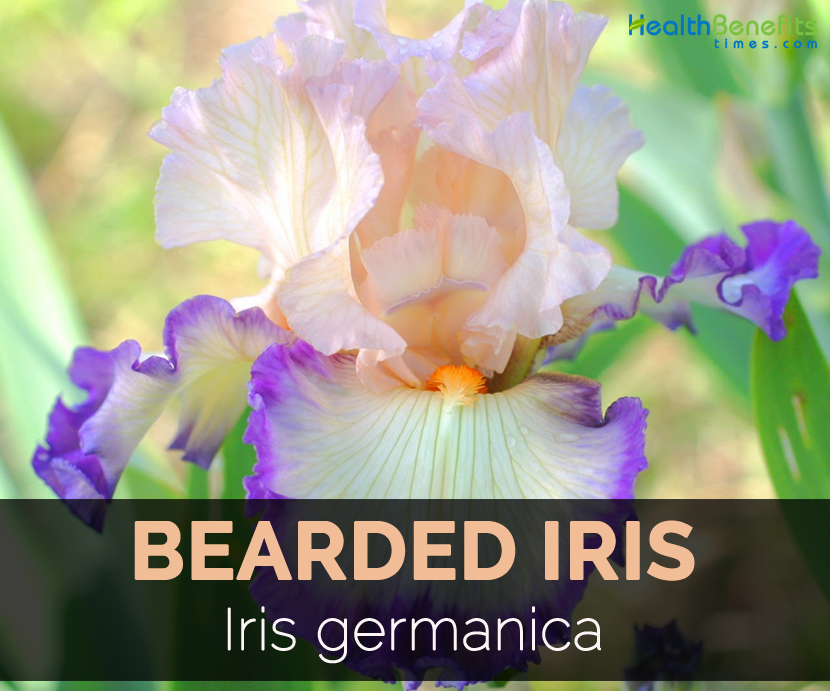| Bearded Iris Quick Facts | |
|---|---|
| Name: | Bearded Iris |
| Scientific Name: | Iris germanica |
| Origin | Probably, Iris germanica is originated in Central southern Europe and the Balkan Peninsula. |
| Shapes | Bluntly angled |
| Health benefits | Treatment for Alzheimer's disease |
Health Benefits of Bearded Iris
The health benefits provided by Bearded Iris is discussed below:
- Treatment for Alzheimer’s disease
An extract of Iris germanica was used for experimenting Alzheimer’s disease. Results showed that it promoted congnitive function of AD rat induced Aβ in the behavioral test. Other studies related to neuropsycopharmacological are essential to figure out the perfect mechanism of action of Bearded Iris as a cure for managing symptoms of Alzheimer’s disease. Moreover, further investigation is still required to identify the main active constituents of Iris germanica that have therapeutic effect on symptoms of Alzheimer’s disease. (1)
Traditional uses
- Juice extracted from juice is used for treating dropsy.
- It is used for treating problems related to lungs, hoarseness, coughs, bronchitis and also chronic diarrhea.
- Chew the pieces of dried root to overcome unpleasant breath.
Precautions
- Leaves and rhizomes contain irisin which is an irritating resinous substance. It could cause severe gastric problems if ingested.
- Some people might get allergies and skin irritations.
- Its excessive use causes vomiting, nausea, colic and purging.
How to Eat
- Peeled rhizomes are used to flavor confectionery, ice cream and baked goods.
- In France, the root starch is regarded as a famine food to extend bread flour after eliminating bitter element.
References:
https://www.itis.gov/servlet/SingleRpt/SingleRpt?search_topic=TSN&search_value=43207#null
https://davesgarden.com/guides/pf/go/189284/
https://www.botanical.com/botanical/mgmh/i/irises08.html
Comments
comments
